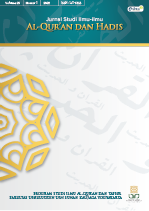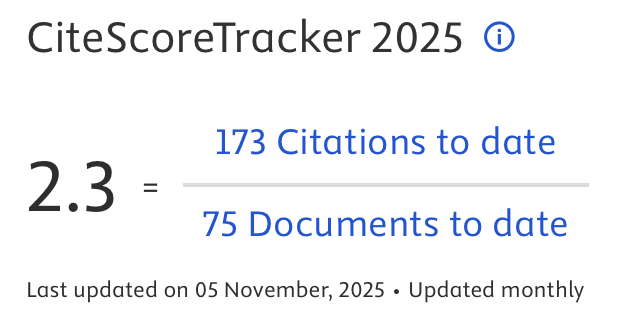Examining Ibn Arabi’s Kashf Method on the Authenticity of Hadith
DOI:
https://doi.org/10.14421/qh.2022.2301-06Keywords:
Ibnu Arabi, Kashf Method, Sufi, Authenticity of HadithAbstract
The method of criticism of Hadith (Naqd Hadith) was developed by Hadith experts to prove whether a Hadith can be categorized as coming from the Prophet or not. Hadith scholars tend to use the method of sanad criticism (Naqd al-Sanad) in determining the authenticity of Hadith. Over time the Hadith scholars began to come up with new methods in an effort to determine the authenticity of hadith in accordance with its scientific tendencies, one of these methods was the Kashf method. This method is widely known among Sufis, but has not been widely used in the context of hadith criticism. One of the Sufi figures who had a focus on the Kashf method was Ibn Arabi. This study is a literature review by analyzing documents derived from Ibn Arabi and experts related to the Kashf method. Data is analyzed by applying descriptive analytical methods and using philosophy of science to determine the validity of the Kashf Method as a method of criticism of Hadith. This study shows that the Kashf method is a mu'tabar (authoritative) method for Sufi scholars and is also recognized by some Hadith experts. According to Zabid al-Jabiri in the treasures of Islamic philosophy, there are three models of methodology of thought, namely bayani, burhani, and irfani. Kashf method includes the irfani model. irfani can be interpreted as the disclosure of knowledge obtained through irradiation of essence by God to His servant (Kashf) after doing spiritual practice (riyâdlah) done on the basis of love. Therefore, the Kashf method is one of the valid methods for determining the validity of hadith.
 Abstract viewed: 734 times
|
Abstract viewed: 734 times
|
 PDF downloaded = 954 times
PDF downloaded = 954 times
References
Abu Zahwu, Muhammad, al-Hadits wa al-Muhaddisun, Kairo: Dar al-Fikr al-Arab, (1959).
al-Fayadl, Mustafa, Teologi Negatif Ibn Arabi: Kritik Metafisika Ketuhanan, Yogyakarta: LkiS, (2012)
Al-Ghazali, Ahmad bin Muhammad, Ihya ulumiddin, Beirut: Dar al-Fikri al-Islami, (2003).
Al-Juwair, Muhammad, Juhudul ulama fi qorni as-sadis fi ar-Radd ala as-Sufiyah, Riyad: Maktabah ar-Rusyd, (2003).
Al-Kattani, Abdul Qadir, Muqaddimah lisanu al-Hujjah al-Burhaniah, Beirut: Dar al-Kutub al-Islamiah, (2007).
Al-Maqarri, Ismail, nafh at-Tib min ghisn al-Andalus at-Thayyib, Beirut: Dar Sadir, (1997).
Al-Qadiri, Muhammad bin Idris, Izalah ad-Dahsyi wa al-walah, Riyad: Maktab al-Islam, (1993).
An-Nabhani, Muhammad Yusuf , Sa‘adat ad-Darain, Beirut: Dar al-Fikr, (t.th).
Bagus, Mustakim, “Pemikiran Islam Muhammad Abed Al-Jabiri”. Journal of Research and Thought of Islamic Education Vol. 2 No. 2, (2019)
Bahri, Media Zainul. “Ibn ‘Arabi and the Transcendental Unity of Religions.” Al-Jami’ah: Journal of Islamic Studies 50, no. 2 (2012).
Binti Ismail, Nor Hanani. “The Use of NAQD Hadith Method to Establish Data Validity: A Conceptual Analysis.” Journal of Social Sciences Research 2018, no. Special Issue 6 (2018).
Ebstein, Michael. “Classifications of Knowledge in Classical Islamic Mysticism: From Eastern Sufi Sources to the Writings of Muyī l-Dīn Ibn Al-Arabī.” Studia Islamica 115, no. 1 (2020).
Ganam, Thalaat, Adwa’ ala at-Tasawwuf, Beirut: Dar al-Fikr. (1979).
Ibn Arabi, Muhamad, Al-Futūhat al-Makīyyah, Beirut: Dar al-Kutub al-Ilmiah, (2014).
Ismail, Tuan Mohd Sapuan Tuan, Rohaizan Baru, Ahmad Fauzi Hassan, Ahmad Zahid Bin Salleh, and Mohd Fauzi Mohd Amin. “The Matan and Sanad Criticisms in Evaluating the Hadith.” Asian Social Science 10, no. 21 (2014).
Istianah, and Sri Wahyuningsih. “The Hadith Digitization in Millennial Era: A Study at Center for Hadith Studies, Indonesia.” Qudus International Journal of Islamic Studies 7, no. 1 (2019).
Izmirli, Betül. “Beyân Etme-Gizleme Paradoksu Açısından Sûfî Tefsîr (Yorum) Geleneğine Genel Bir Bakış.” Cumhuriyet Ilahiyat Dergisi 24, no. 3 (2020).
Kholaf, Abd al-Wahab, Ilmu Ushul al-Fiqh, Kairo: Maktabah Dakwah. (2009).
Lala, Ismail. “Qur’ānic Knowledge and Akbarian Wisdom: Ibn ‘Arabī‘s Daring Hermeneutics in Fuṣūṣ Al-Ḥikam.” Cumhuriyet Ilahiyat Dergisi 25, no. 1 (2021).
Marhumah. “Hadith, Justice, and Gender Equality: Indonesian Progressive Muslims’ Thought.” Pertanika Journal of Social Sciences and Humanities 27, no. 1 (2019).
Orhan, Kübra Zümrüt. “Criticism against Ibn Al-Arabi from among Sufi’s: The Case of ‘ala’ Al-Dawla Al-Simnani.” Cumhuriyet Dental Journal 23, no. 2 (2019).
Rasyid, Daud, Aisyah Daud Rasyid, Asmuliadi Lubis, Mohd Abd Wahab Fatoni Bin Mohd Balwi, and Bilal Daud Rasyid. “The Writing of Hadith in the Era of Prophet Muhammad A Critique on Harun Nasution’s Thought.” Al-Jami’ah 59, no. 1 (2021).
Salim, Shadiq, al-Masadir al-Ammah Litalaqqi inda as-Sufiyah Ardhan wa Naqdan, Riyad: Maktabah ar-Rusyd. (1993).
Sedgwick, Mark. “Ibn ‘Arabi and the Contemporary West: Beshara and the Ibn ‘Arabi Society.” Islam and Christian–Muslim Relations 25, no. 3 (2014)
Sya’rani, al-Anwar al-Qudsiah, Libanon: Maktabah al-Maarif. (2005).
Syahrawardi, Awarifu al-Ma’arif, Kairo: Dar al-Ma’arif, (2007).
Tala, Murat. “The Works of Al-Kāiyajī and Its Contribution to the Arabic Linguistic: Identification, Classification and Evaluation.” Cumhuriyet Ilahiyat Dergisi 24, no. 3 (2020).
Wan Mohd. Nor Wan Daud, Konsep Ilmu Dalam Islam, Rosnani Hashim (terj). Kuala Lumpur: Dewan Bahasa Dan Pustaka, (1994).
Downloads
Published
How to Cite
Issue
Section
License
Publishing your paper with Jurnal Studi Ilmu-ilmu al-Qur'an dan Hadis means that the author or authors retain the copyright in the paper. Jurnal Studi Ilmu-ilmu al-Qur'an dan Hadis uses license CC-BY-NC-ND or an equivalent license as the optimal license for the publication, distribution, use, and reuse of scholarly works. This license permits anyone to copy and redistribute the material in any medium or format and must give appropriate credit, provide a link to the license, and indicate if changes were made. If you remix, translate, transform or build upon the material you may use it for private use only and not for distribution. Jurnal Studi Ilmu-ilmu al-Qur'an dan Hadis granted an exclusive non-commercial reuse license by the author(s), but the author(s) are able to put the paper onto a website, distribute it to colleagues, give it to students, use it in your thesis, etc, so long as the use is not directed at a commercial advantage or toward private monetary gain. The author(s) can reuse the figures and tables and other information contained in their paper published by Jurnal Studi Ilmu-ilmu al-Qur'an dan Hadis in future papers or work without having to ask anyone for permission, provided that the figures, tables, or other information that is included in the new paper or work properly references the published paper as the source of the figures, tables or other information, and the new paper or work is not direct at a private monetary gain or commercial advantage.
Jurnal Studi Ilmu-ilmu al-Qur'an dan Hadis journal Open Acces articles are distrubuted under the Creative Commons Attribution-NonCommercial-NoDerivatives 4.0 International (CC BY-NC-ND 4.0). Article can be read, copy and redistribute the material ini any medium or format under the following conditions:
Attribution — You must give appropriate credit, provide a link to the license, and indicate if changes were made. You may do so in any reasonable manner, but not in any way that suggests the licensor endorses you or your use.
NonCommercial — You may not use the material for commercial purposes.
NoDerivatives — If you remix, transform, or build upon the material, you may not distribute the modified material.










